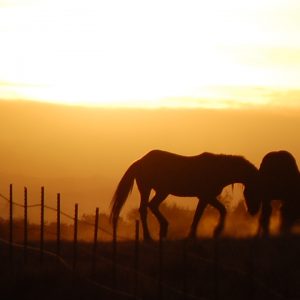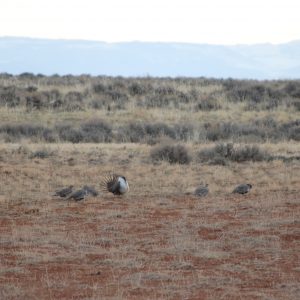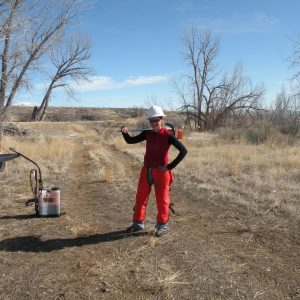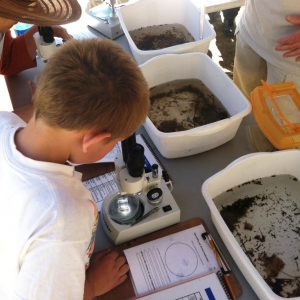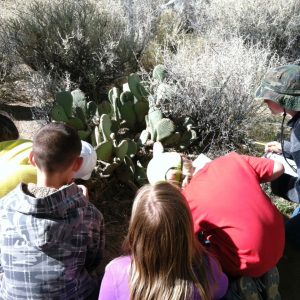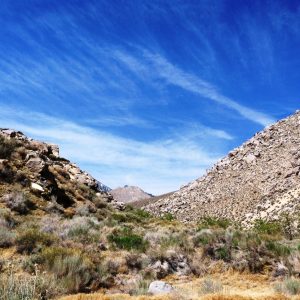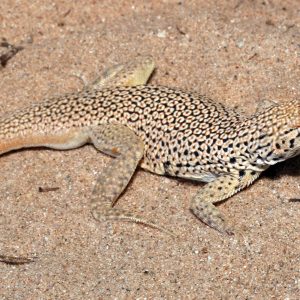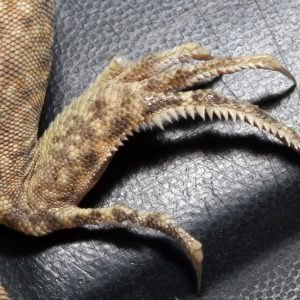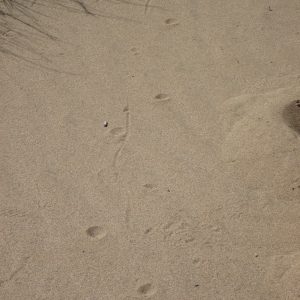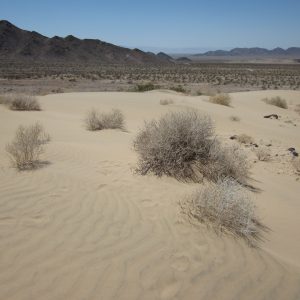- Mustangs in the morning sun
- Male sage grouse trying to pick up chicks
- Chainsaw training is a stylish undertaking in bright orange chaps and a hardhat
After spending a month away from Wyoming, I am glad to finally be back and busy at the BLM. Work activities resumed immediately, as the full-time field season is rapidly approaching. For now, I spend my early mornings getting out to sage grouse leks (strutting grounds for mating displays) before light hits the horizon to count the number of grouse present at each lek. Once the sun has been up for an hour or two, the sage grouse tend to disperse and go about their business while I go about mine. My other activities include checking eagle nests for signs of activity, prowling around for plant populations to collect seed from later in the season, planting sagebrush seed collected last year, fence type inventories, and a variety of office work.
Nowadays the weather is mostly conducive to outdoor work, which makes staying in the office a bit restless for a field worker like me. Still, I realize the value of the indoor stuff too, and it’s cool to see how all the field-collected data comes together to benefit wildlife. Sage grouse counts, for instance, are used to determine the response of grouse to vegetation treatments like mowing and prescribed burns, or to disturbance like human development and mining. As a Candidate Species for listing under the Endangered Species Act, this could be valuable policy-making information to prevent the listing of sage grouse by protecting it before its numbers decline further. Fence type inventory involves driving around and recording what type of fences are where so that the BLM can prioritize projects for replacing netwire and installing smooth wire to facilitate pronghorn migration, or installing let-downs to lower the fence height during elk migration. The field collected data comes back to the office to be input into our GIS mapping system, or to be analyzed in Excel, and decisions are made based on the results that go back out to the field to create on-the-ground benefits to wildlife. Remembering this makes it easier to keep my butt glued to the office chair when I start to hanker for the outdoors. Field season will be here soon enough, so it’s important to get this work done before it gets neglected while I roam the field office in the late spring and summer.
A bit of wisdom from my supervisor on how be a great vs. good biologist: “Follow through on all data collected. Be sure that data is downloaded and summarized appropriately, organized and timely. This will make all your work worthwhile.” Good advice to keep handy on one’s path towards a permanent career.

